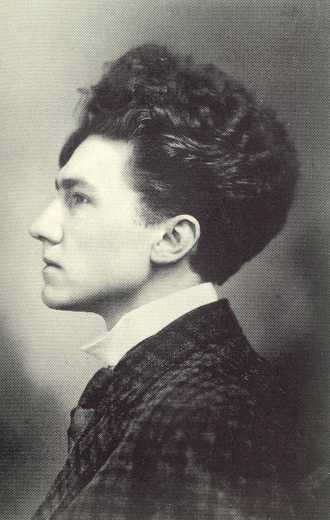Language in Poetry
by Ezra Pound3 Principles of Imagism
- Direct treatment of the "thing" whether subjective or objective.
- To use absolutely no word that does not contribute to the presentation.
- As regarding rhythm: to compose in the sequence of the musical phrase, not in sequence of a metronome.
- Pay no attention to the criticism of men who have never themselves written a notable work.
- Use no superfluous word, no adjective which does not reveal something.
- Don't use such an expression as "dim lands of peace." It dulls the image. It mixes an abstraction with the concrete. It comes from the writer's not realizing that the natural object is always the adequate symbol.
- Go in fear of abstractions. Do not retell in mediocre verse what has already been done in good prose.
- What the expert is tired of today the public will be tired of tomorrow.
- Be influenced by as many great artists as you can, but have the decency either to acknowledge the debt outright, or to try to conceal it.
- Use either no ornament or good ornament.
- Let the candidate fill his mind with the finest cadences he can discover, preferably in a foreign language, so that the meaning of the words may be less likely to divert his attention from the movement.
- It is not necessary that a poem should rely on its music, but if it does rely on its music that music must be such as will delight the expert.
- Let the neophyte know assonance and alliteration, rhyme immediate and delayed, simple and polyphonic, as a musician would expect to know harmony and counterpoint and all the minutiae of his craft.
- Don't imagine that a thing will "go" in verse just because it's too dull to go in prose.
In the realm of poetry, there are few figures as influential and controversial as Ezra Pound. A pioneer of the Imagist movement, Pound sought to strip poetry of its excesses and return it to its essence: the image.
Watch Video: Ezra Pound Reading Canto LXXXI
Pound's principles of Imagism can be summed up in three main tenets: 1: direct treatment of the "thing," whether subjective or objective; 2: the use of precise, concrete imagery; and 3: the use of a musical rhythm in the language.
1: The "thing" in Pound's poetry refers to the subject matter of the poem, whether it be a physical object or an abstract idea. The Imagists sought to present this "thing" in a direct and unadorned manner, free from the excesses of Romanticism and Symbolism. The image, in its purest form, should be the starting point of the poem, from which the rest of the work flows.
2: The use of precise, concrete imagery is integral to Pound's principles of Imagism. The Imagists sought to create a sharp, clear picture in the mind of the reader, using simple and direct language. By using concrete imagery, the poem is able to convey a sense of reality and immediacy, drawing the reader into the world of the poem.
3: Pound believed that the language of poetry should have a musical rhythm, akin to the rhythms of speech. This principle is closely related to his use of concrete imagery, as the rhythms of the language should mimic the rhythms of the world. By using the rhythms of speech, the poem is able to create a sense of authenticity, drawing the reader into the world of the poem.
Pound's principles of Imagism represent a radical departure from the excesses of traditional poetry, seeking to strip the art form down to its essence: the image. The use of direct treatment of the "thing," precise, concrete imagery, and the use of musical rhythm in the language creates a sense of reality and immediacy, drawing the reader into the world of the poem.



